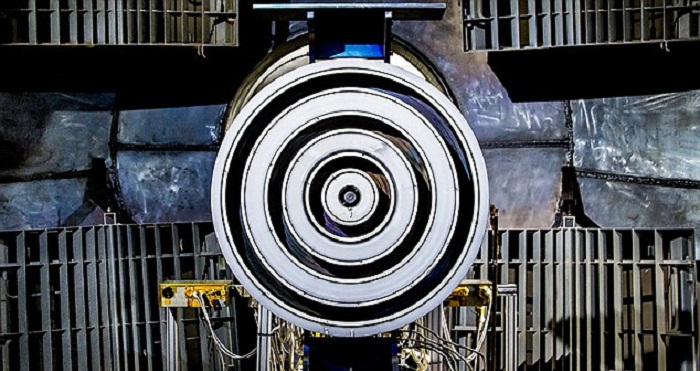The tabletop-sized thruster prototype, dubbed the `X3,` uses a 45,000 mph stream of plasma to push spacecraft forward.
Because its consumes 100 million times less fuel than conventional chemical rockets, the thruster is ideal for exploring Mars, asteroids and the edge of the solar system.
The prototypes have been created by engineers from the University of Michigan`s Next Space Technologies for Exploration Partnerships (NextSTEP) program.
The engine is part of Aerojet Rocketdyne`s XR-100 propulsion system, which could, in the next ten years propel a vessel to Mars.
Nasa awarded $6.5 million over the next three years to Aerojet Rocketdyne for the development of the propulsion system, dubbed the XR-100.
Developed by Professor Alec Gallimore thruster, the X3, is central to this system, and his team will receive $1 million of the award for work on the thruster.
The XR-100 is up against two competing designs.
All three of them rely on ejecting plasma – an energetic state of matter in which electrons and charged atoms called ions coexist – out the back of the thruster.
But the X3 has a bit of a head start. For thrusters of its design power, 200 kilowatts, it is relatively small and light.
And the core technology – the Hall thruster – is already in use for manoeuvring satellites in orbit around the Earth.
More about:
















































